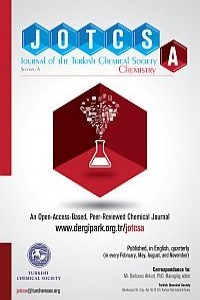DETERMINATION AND EVALUATION OF METHANOL, ETHANOL AND HIGHER ALCOHOLS IN LEGALLY AND ILLEGALLY PRODUCED ALCOHOLIC BEVERAGES
In this paper, we demonstrated the results of ethanol, methanol and higher alcohols contents of the legally and illegally produced alcoholic beverage samples after analyzing headspace gas chromatographic methods conducted in Council of Forensic Medicine (ATK), Department of Chemistry, Istanbul, TURKEY between years 2015-2017. Fast and reliable analysis of the alcoholic beverages, especially in terms of methanol concentration, has vital importance primarily due to the cases of death arose from metabolic acidosis after consumption of illicit alcoholic beverages with high concentration of methanol produced in clandestine laboratories. 96 Turkish Rakı samples, 8 beer samples, 1 wine sample, 101 other strong drink samples, totaling to 206 samples, and 2 industrial ethanol samples were thoroughly investigated. An HS-GC-MS system was utilized for qualitative analysis of the higher alcohols and for scanning any volatile compound, whereas the determination of ethanol and methanol concentrations HS-GC-FID system was performed. So, after all results were investigated in detail, mentioning the key points for evaluations, it was clearly described whether the drinks comply with criteria set by Turkish Food Codex Communiqué on Distilled Alcoholic Beverages. 89 of 96 Rakı samples and 90 of 101 strong alcoholic beverages were not definitely compliant with the Communiqué since they contained either high concentration levels of methanol or tert-butanol, which is a denaturant.
___
- 1. Arslan MM, Zeren C, Aydin Z, Akcan R, Dokuyucu R, Keten A, et al. Analysis of methanol and its derivatives in illegally produced alcoholic beverages. J Forensic Leg Med. 2015;33:56–60.
- 2. World Health Organization. WHO-Turkey [Internet]. 2010 [cited 2018 Sep 3]. Available from: http://www.who.int/substance_abuse/publications/global_alcohol_report/profiles/tur.pdf?ua=1
- 3. World Health Organization. WHO Global Information System on Alcohol and Health (GISAH) [Internet]. [cited 2018 Sep 3]. Available from: http://apps.who.int/gho/data/node.main.GISAH
- 4. Ohimain EI. Methanol contamination in traditionally fermented alcoholic beverages : the microbial dimension. Springerplus. 2016;(5):1–10.
- 5. Akhgari M, Panahianpour MH, Bazmi E, Etemadi-Aleagha A, Mahdavi A, Nazari SH. Fatal methanol poisoning: features of liver histopathology. Toxicol Ind Health. 2013;29(2):136–41.
- 6. Lee X-P, Kumazawa T, Kondo K, Sato K, Suzuki O. Analysis of methanol or formic acid in body fluids by headspace solid-phase microextraction and capillary gas chromatography. J Chromatogr B Biomed Sci Appl. 1999;734:155–62.
- 7. Wallage HR, Watterson JH. Formic acid and methanol concentrations in death investigations. J Anal Toxicol. 2008;32:241–7.
- 8. Zakharov S, Nurieva O, Navratil T, Diblik P, Kuthan P, Pelclova D. Acute methanol poisonings: Folates administration and visual sequelae. J Appl Biomed. 2014;12:309–16.
- 9. Moffat AC. Clark’s Isolation and Identification of Drugs. 2nd ed. London: Pharmaceutical Press; 1986. 744-745 p.
- 10. Tulashie SK, Appiah AP, Torku GD, Darko AY, Wiredu A. Determination of methanol and ethanol concentrations in local and foreign alcoholic drinks and food products ( Banku , Ga kenkey , Fante kenkey and Hausa koko ) in Ghana. International Journal of Food Contamination; 2017;14(4):1–5.
- 11. European Commission. Regulation (EC) No 110/2008 of the European Parliament and of the Council of 15 January 2008 on the definition, description, presentation, labelling and the protection of geographical indications of spirit drinks and repealing Council Regulation (EEC) No. Off J Eur Union. 2008;L39(110):16–54.
- 12. Turkish Food Codex Communiqué of Distilled Alcoholic Beverages (2016/55) [Internet]. 2016 [cited 2018 Nov 14]. Available from: http://www.mevzuat.gov.tr/Metin.Aspx?MevzuatKod=9.5.23431&MevzuatIliski=0&sourceXmlSearch=alkol
- 13. The Republic of Turkey, Tobacco and Alcohol Market Regulatory Authority, Regulation of the Production of Ethyl Alcohol and Methanol with Procedures and Principles about Domestic and Foreign Commerce [Internet]. 2011 [cited 2018 Oct 6]. Available from: http://www.mevzuat.gov.tr/Metin.Aspx?MevzuatKod=7.5.15462&MevzuatIliski=0&sourceXmlSearch=#
- 14. Kingsbury JA, Delzer GC, Hopple JA. Anthropogenic Organic Compounds in Source Water of Nine Community Water System that Withdraw from Streams, 2002-05: U.S. Geological Survey Scientific Investigations Report 2008–5208. Virginia; 2008.
- 15. Hodson G, Wilkes E, Azevedo S, Battaglene T.Methanol in wine. In: 40th World Congress of Vine and Wine. 2017.
- 16. Osobamiro T. Analysis of Some Contaminants Commonly Found in Alcoholic Beverages. Am-Euras J Sci Res. 2013;8(1):53–6.
- Başlangıç: 2014
- Yayıncı: Türkiye Kimya Derneği
Sayıdaki Diğer Makaleler
